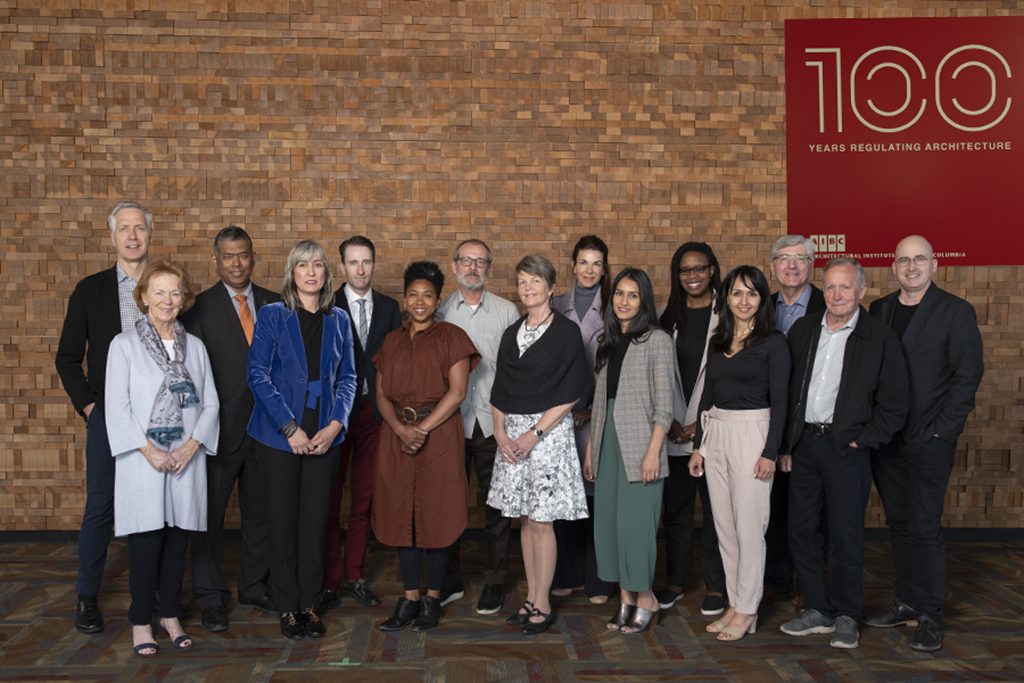British Columbia’s architectural institutions are reflecting on a century of work and see great potential in the next 100 years.
The Architectural Institute of British Columbia was incorporated in April 1920 and is marking its 100th anniversary this year.
“Our kickoff was on May 6, when our 100th annual meeting took place. We calculated it by the fact that the Architect’s Act was enacted in 1920, so next year will mark 100 years of regulation of the profession in British Columbia,” Architectural Institute of British Columbia (AIBC) general counsel and deputy CEO Thomas Lutes said.
Lutes said events will roll out throughout the year including a dedicated web page, public outreach and efforts to raise awareness of both architecture and the importance of regulating the profession.
“Our sense as a regulator is that the more public awareness, the better we can protect them in regulating the profession,” he said.
“As much as we focus on celebrating 100 years of AIBC, our focus remains on the competency of architects, their contributions to the built environment and dealing with any problems that may arise,” he added.
Architectural Foundation of British Columbia (AFBC) board member and HMCA Architecture + Design principal Darryl Condon pointed to the 100th anniversary as a milestone.
“From my firm’s standpoint, it’s something significant. We really value the history and longevity and we’re looking forward to the next 100 years to contribute to positive changes in the profession,” Condon said. “It’s exciting to reflect on last 100 years but it’s really exciting to focus on the next 100 years as well.”
What’s changed in the last century, Lutes noted, is not only a rise in urban growth and density but also the rise of planning as a profession as well as a greater sense in the public of a planned urban environment.
“There’s also greater awareness of design for the public. There are shows about design and renovation and that’s part of a growing public engagement with the built environment. It’s also further impetus for architects and regulators to up their game and prepare for rising expectations,” Lutes said.
“There’s more interest in issues of design whether its people’s homes or the role design plays in organizational transformation,” Condon said. “The more people are involved in conversations about spaces they live and work in, the better.”
While there is a greater awareness of design, there remain misconceptions about the architect’s role on projects, Lutes said.
“Often the perception is that architects design the “skin” or facade (of a structure) but the science behind it is how the building gets built, the building code is honored and that architect is on site,” he said.
“We’re the one profession that’s there from the beginning of the project to the end, which creates an interesting issue for the regulator, because regulatory professionals are there from the dreaming and design phase to building, occupancy and then beyond if there are any problems,” Lutes added.
Technology has also revolutionized the profession but less in terms of complexity than volume, Condon said.
“There were some amazingly complex structures built before computers. Technology is less about doing things we couldn’t do before but being able to do a lot more and do so quickly, with a different approach to collaboration,” he said.
Condon added while it’s tough to predict where the profession will go in another century, just by looking at changes in the last 10 to 15 years he anticipates further innovation ahead.
“The way projects are delivered continues to evolve, and the value of data creating during the design and building process has so many benefits to it. We’re only scratching the surface,” he said.
The practice of architecture is also expanding past built forms, he said.
“The role architects play in the future will evolve significantly. We have a unique approach to problem solving and it’s being applied to a larger set of problems. We’re increasingly seeing our skills work with dealing with non-physical problems, such as helping with strategic planning, developing governance structures and building community capacity,” Condon said.
Architecture is also now a global profession, Lutes said, pointing to international agreements between Canadian, Mexican, American and New Zealand regulatory bodies that allow architects to work on overseas projects and operate firms in other countries.
“It’s becoming one of the more transportable and universal professions. We’re looking at a lot more work by Canadian architects outside of Canada and an invitation for foreign trained architects to work here,” Lutes said.











Recent Comments